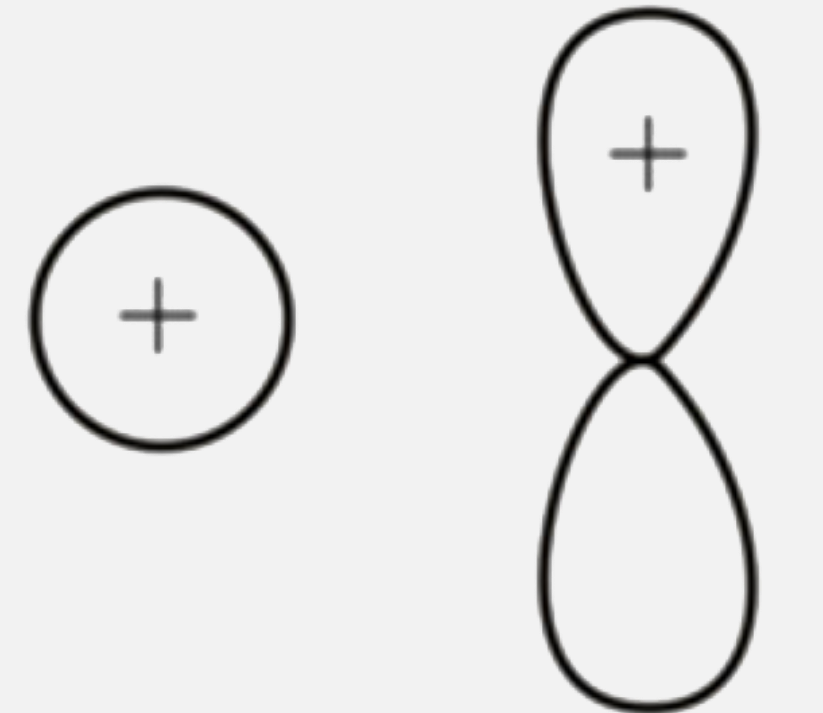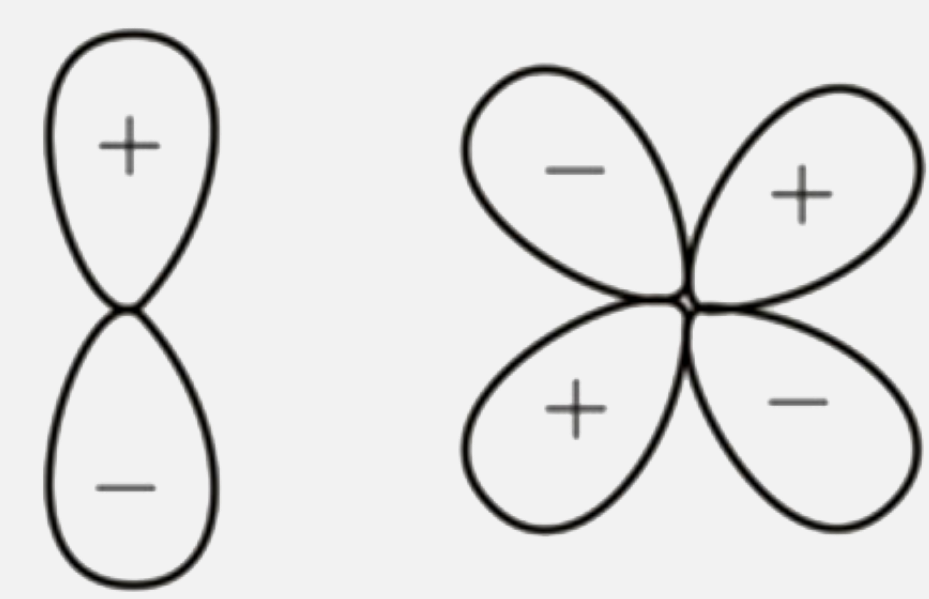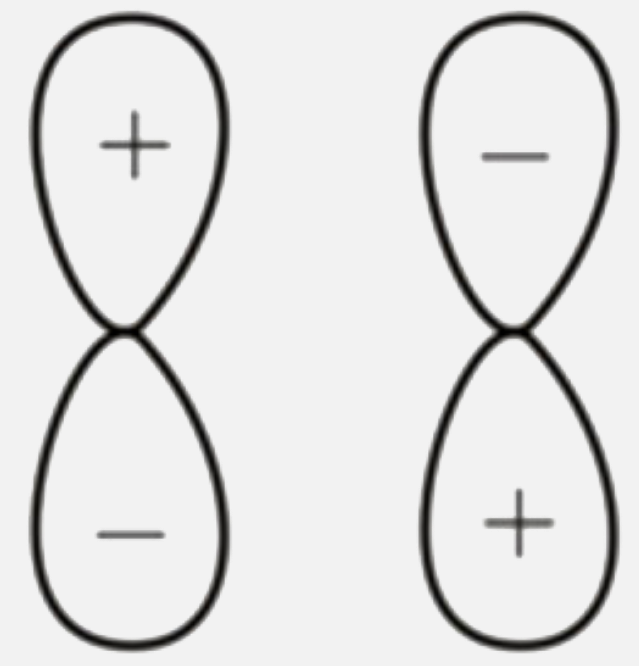Explore topic-wise InterviewSolutions in .
This section includes InterviewSolutions, each offering curated multiple-choice questions to sharpen your knowledge and support exam preparation. Choose a topic below to get started.
| 22101. |
What is the co - ordination number of Fe in [FeCl_(2)(en)_(2)]Cl? |
|
Answer» SOLUTION :Here en is bidentate `Clrarr` UNIDENTATE Hence the coordination NUMBER of `FE` is six. |
|
| 22102. |
What is meant by the term‘broad spectrum antibiotics’ ? Explain. |
| Answer» Solution :Antibiotics which KILLS or inhibits WIDE range of BACTERIA. | |
| 22103. |
When 1-pentyne (A) is formed with 4N alcoholic KOH at 175^(@) C, it is converted into an equilibrium mixture of 1.3% 1-pentyne (A), 95.2 % 2-pentyne (B) and 3.5% of 1.2 pentadierie (C ). The equilibrium is maintained at 175^(@) C. Calculate DeltaG_(2)^(@) for the following equilibria. B |
|
Answer» |
|
| 22104. |
Which of the following change the colour of aqueous solution of FeCl_(3)? |
|
Answer» `K_(4)[FE(CN)_(6)]` B) `H_(2)S overset(Fe^(3+))to` Oxidized to sulphere C and D `Fe^(3+)3+ScNO to underset("Blood red colour")([Fe(SCN)_(3)])` |
|
| 22105. |
What volume of O_2 is soluble in 100 cm^3 of water at 293 K. |
|
Answer» `3.08 CC` |
|
| 22106. |
Why a solution of [Ni(H_(2)O)_(6)]^(2+) is green while a solution of (Ni(CN)_(4)]^(2-) is colourless ? |
| Answer» SOLUTION :`[Ni(H_(2)O)_(6)]^(2+)` is an octahedral COMPLEX while `[Ni(CN)_(4)]^(2-)` is a SQUARE planar complex. The two complexes are associated with different crystal field SPLITTING. The two compounds give different colours in d-d transition. | |
| 22108. |
Which reaction sequence would be best to prepare 3-chloroanilne from benzene ? |
|
Answer» Chlorination, nitration, reduction  (i)In CASE chlorination is done EARLIER than nitration, CHLOROBENZENE formed at first step would introduce `NO_2` group in ortho-position, not in m-position (ii) Again if -`NO_2` group is REDUCED earlier than the chlorination step, -`NH_2` group formed on reduction will again introduce -Clin o-position |
|
| 22109. |
(W) and (X) are optically active isomers of C_(5)H_(9)Cl (W) on treatment with one mole of H_(2) is converted to an optically inactive compound (Y). But (X) gives an optically active compound (Z) under the same conditions Give the structure of (Y) and configuration of (W),(X) and (Z) in Fischer projections. |
Answer» SOLUTION :
|
|
| 22110. |
Which of the following has no action with starch solution: |
|
Answer» `F_2 and Cl_2` |
|
| 22111. |
Which of the following will not function as a buffer solution |
|
Answer» NaCl and NaOH |
|
| 22112. |
What happens when bromobenzene is boiled with 50% NaOH solution? |
| Answer» SOLUTION :No REACTION TAKES PLACE. | |
| 22114. |
Which of the following species does / do not exist ? |
| Answer» Answer :A::C::D | |
| 22115. |
Which of the statements (s) is/are not true? |
|
Answer» On passing `H_(2)S`through acidifid `K_(2)Cr_(2)O_(7)`solution, a milky colour is obseved All other given statements are true. |
|
| 22116. |
The type of activity of disinfectants is checked by which microorganism ? (A) |
|
Answer» SALMONELLA typhosa |
|
| 22117. |
Which of the following statements about (+) (-) sucrose is not correct ? |
|
Answer» it does not POSSES a FREE aldehydic (or) ketonicgroup |
|
| 22118. |
Which of the following compounds is NOT a vitamin ? |
|
Answer» NICOTINAMIDE |
|
| 22119. |
Which of the following pair has maximum number of unpaired electrons? |
|
Answer» `MN^(2+), FE^(3 +)` |
|
| 22120. |
When 10 ampere current is passed for 80 min., volume of H_(2) gas liberated is |
|
Answer» `4.5 dm^(3)` `therefore Q=10xx80xx60=48000` COULOMB `11.2 dm^(3) `of `H_(2)` LIBERATED by 96500 coulomb of electricity. Therefore `x dm^(3)` of `H_(2)` liberated by 4800 coulomb of electricity . `therefore x=11.2xx4800//96500=5.57` |
|
| 22121. |
The reagents, NH_4Cl and aqueous NH_3 will precipitate will recinitate |
| Answer» Answer :A::B | |
| 22122. |
Three element A,B and C crystallise into a cubic solid lattice. Atoms A occupy the corners, B occupy the cube centres and C occupy the edges. The formula of the compound is : |
|
Answer» ABC No. of .B. atoms `= 1 xx1= 1 ` No. of .C. atoms `= ( 1)/( 4) xx 12 = 3 ` FORMULA `= ABC_(3)` |
|
| 22123. |
Which of the following compound has the smallest (X-A-X) bond angle in each series repectively. (A)OsF_(2), OsCl_(2), OsBr_(2) (B) SbCl_(3), SbBr_(3), SbI_(3) (C) Pl_(3),AsI_(3),SbI_(3) |
|
Answer» `OSF_(2),SbCl_(3) and PI_(3)` 
|
|
| 22124. |
Which one of the following is not used to purify colloids? |
|
Answer» Dialysis |
|
| 22125. |
Which of the following can exhibit cis-trans isomerism? |
|
Answer» `CH_(3)-CH(Cl)COOH` |
|
| 22127. |
Which of the following is a neutral polymer ? |
|
Answer» Polyethylene |
|
| 22128. |
Which of the anhydrous salts when come in contact with water turns blue |
|
Answer» Ferrous SULPHATE |
|
| 22129. |
The species H_2O,HCO_3^(-), HSO_4^(-) and NH_3 can act both as Bronsted acid and base. For each case, given the corresponding conjugate acid and base. |
Answer» SOLUTION :
|
|
| 22130. |
Which will not give acetamide (no heating ) onreaction with ammonia: |
| Answer» Answer :A | |
| 22131. |
Which of the following is first antibiotic ? |
|
Answer» Halinin |
|
| 22132. |
Which one of the following statements is not true at room temperature and pressure? |
|
Answer» `p_(4) O_(10)` is a white solid. |
|
| 22133. |
What is beta-elimination reaction ? |
|
Answer» Solution :When an alkyl HALIDE is heated with an alcoholic solution of KOH, it loses a molecule of hydrogen `"halide"_(HX)` to GIVE an ALKENE. This reaction is called dehydrohalogenation or `beta`-elimination reaction. e.g. `underset("ETHYL CHLORIDE")(underset(H)underset(|)CH_(2))-underset(Cl)underset(|)CH_(2)+underset("(alc.)")KOH overset(Delta)to underset("Ethene")CH_(2)=CH_(2)+KCl+ H_(2)O` |
|
| 22134. |
Which is/are correct statements about the role of a catalyst in a reaction? |
|
Answer» It is reactant in a rate-determining step and then a product of some subsequent step. |
|
| 22135. |
Which one is water-soluble: |
|
Answer» `MgSo_4` |
|
| 22136. |
Which of the following factors is responsible for the property of fluorine as strong oxidising agent ? |
|
Answer» ELECTRON affinity |
|
| 22137. |
The yellow precipitate formed during the chromyl chloride test in chemically |
|
Answer» chromic acid |
|
| 22138. |
Which of the following is the ore of zinc? |
|
Answer» BAUXITE |
|
| 22139. |
What are essential and non-essential amino acids ? Give two examples of each type. |
| Answer» Solution :`alpha`-AMINO acids which are needed for health and growth of HUMAN beings but are not synthesised by the human BODY are called essential amino acids. For example, VALINE, leucine, arginine, etc. On the other hand, c-amino acids which are needed for health and growth of human beings and are synthesised by the human body are called non-essential amino acids. For example, glycine, alanine, glutamine, etc. | |
| 22141. |
Which colligative property is more useful to determine the molecular weight of the substances like proteins and polymers ? |
|
Answer» Lowering of vapour pressure. |
|
| 22142. |
Which one of the following is the formula of chromyl chloride? |
|
Answer» `CrOCl_(2)` |
|
| 22143. |
Which of the following alkenes when passed through conc. H_(2)SO_(4) followed by hydrolysis with boiling water would give tert-butyl alcohol ? |
|
Answer» Ethylene |
|
| 22144. |
Why are interhalogen compounds more reactive than halogens ? |
| Answer» SOLUTION :This is because the interhalogen COMPOUNDS are polar and have lower BOND energies as COMPARED to halogen. | |
| 22145. |
Write resonance structures of arenium ions with : (i) NO_(2)^(o+).(ii) overset(o+)CH_(3) |
|
Answer» |
|
| 22146. |
Which is strongest acidic? |
|
Answer» `CH_(3)CH_(2)COOH` |
|
| 22147. |
When a sulphur sol is evaporated sulphur is obtained.On mixing with water sulphur sol is not formed.The sol is |
|
Answer» lyophilic |
|
| 22148. |
What are reaction involved in the reductive removal removal of nitro group from an aromatic compound? |
| Answer» Solution :`underset("Nitrobenzene")(C_(6)H_(5)-NO_(2)) underset("Reduction")overset(Sn//HCl)to underset("Aniline")(C_(6)H_(5)-NH_(2)) underset(("Diazotization"))overset(NaNO_(2)//HCl,273-278K)to underset("BENZENEDIAZONIUM chloride")(C_(6)H_(5)-overset(+)(N)-=NCl^(-)) underset(("Reduction"))overset(Aq.H_(3)PO_(2)//CU^(+))to underset(C_(6)H_(6))` | |
| 22149. |
What is the charge in coulomb of Fe^(3+) ion |
|
Answer» `6.4xx10^(19)C` |
|
| 22150. |
Two half-reactions of an electrochemical cell are given below : MnO_(4)^(-)(aq) + 8H^(+) (aq) + 5e^(-) toMn^(2+) (aq) + 4H2_O (I), E° = 1.51 V Sn^(2+) (aq) toSn^(4+) (aq) + 2e^(-) E° = + 0.15 V. Construct the redox reaction equation from the two half-reactions and calculate the cell potential from the standard potentials and predict if the reaction is reactant or product favoured. |
|
Answer» Solution :`MnO_(4)^(-) (aq) + 8H^(+) (aq)+ 5e^(-) to Mn^(2+)(aq) + 4H_(2)O (l), E^(@) = +1.51 V`………..(i) `Sn^(2+)(aq) to Sn^(4-) (aq) + 2E^(-), E^(@) = +0.15 V`……(ii) Multiply EQUATION (i) by 2 and equation (ii) by 5, we have `2MnO_(4)^(-) (aq) + 16H^(+) (aq) to 2Mn^(2+)(aq) + 8H_(2)O (l), E^(@) =+1.51 V` `5Sn^(2+)(aq) to 5Sn^(4+) (aq) + 10E^(-), E^(@) = +0.15 V` Adding equation (i) and (ii), we GET `5Sn^(2+) (aq)to 5Sn^(4+) (aq) to 2Mn^(2+) (aq) + 5Sn^(4+)(aq) + 8H_(2)O (l) E^(@) = +1.66 V` As the value is +ve, the reaction is PRODUCT favoured. |
|







